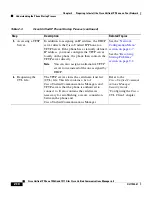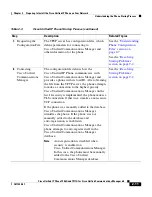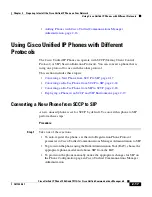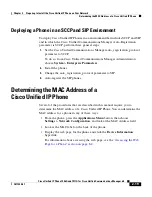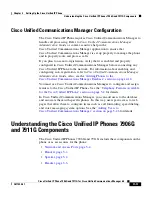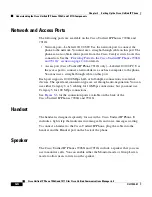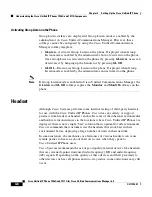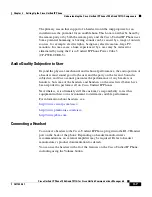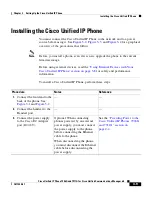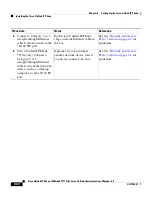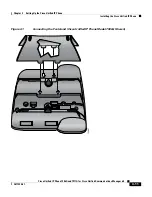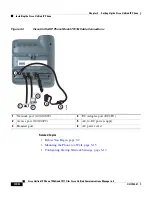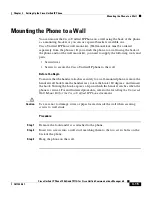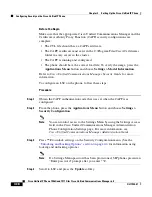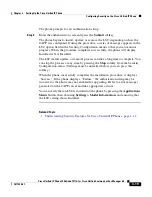
Chapter 3 Setting Up the Cisco Unified IP Phone
Understanding the Cisco Unified IP Phones 7906G and 7911G Components
3-4
Cisco Unified IP Phone 7906G and 7911G for Cisco Unified Communications Manager 6.0
OL11954-01
Network and Access Ports
The following ports are available on the Cisco Unified IP Phones 7906G and
7911G:
•
Network port—Labeled 10/100 SW. Use the network port to connect the
phone to the network. You must use a straight-through cable on this port. The
phone can also obtain inline power from the Cisco Catalyst switch over this
connection. See the
“Providing Power to the Cisco Unified IP Phones 7906G
and 7911G” section on page 2-4
for details.
•
Access port (Cisco Unified IP Phone 7911G only)—Labeled 10/100 PC. Use
the access port to connect a network device, such as a computer, to the phone.
You must use a straight-through cable on this port.
Each port supports 10/100 Mbps half- or full-duplex connections to external
devices. The speed and connection type are set through auto-negotiation. You can
use either Category 3 or 5 cabling for 10-Mbps connections, but you must use
Category 5 for 100 Mbps connections.
See
Figure 3-3
for the connection ports available on the back of the
Cisco Unified IP Phones 7906G and 7911G.
Handset
The handset is designed especially for use with a Cisco Unified IP Phone. It
includes a light strip that indicates incoming calls and voice messages waiting.
To connect a handset to the Cisco Unified IP Phone, plug the cable into the
handset and the Handset port on the back of the phone.
Speaker
The Cisco Unified IP Phones 7906G and 7911G include a speaker that you can
use to monitor calls. You can enable either the Monitor mode or Group Listen
mode to allow users to listen on the speaker.
Summary of Contents for 7906G - Unified IP Phone VoIP
Page 4: ......

